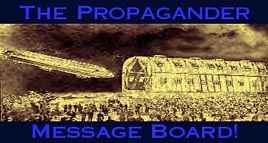Explaining
Mefo Bills
by Levi Bookin
Bills of Exchange
In order to understand Schacht's contribution to Germany's re-armament, we have to understand his Mefo Bills. Several forms of negotiable instruments are used in commerce and finance, their common factor being that they can be negotiated, that is to say that they can be endorsed to another party. Among negotiable instruments are bills of exchange. The simplest form of a bill of exchange is one that we all use from time to time, namely a check, which is a bill of exchange drawn on a bank.
The classic definition of a bill of exchange is: An unconditional order in writing addressed by one person to another, signed by the person giving it, requiring the person to whom it is addressed, to pay on demand, or at fixed or determinable future time, a sum certain in money, to order or to bearer. That means that, instead of writing a check, the drawer writes e.g.
TO Walter O'Loepp (Drawee) AT 60 DAYS AFTER SIGHT, PAY TO THE ORDER OF Levi Bookin (Payee), THE SUM OF $1,000,000, SIGNED (The Drawer).
Levi presents the bill to Walter, who writes "Accepted" on its face and signs under the acceptance. That indicates that Walter agrees to pay.
"But what use is that?" you may say. Levi takes the bill to Walter's bank and endorses the bill in their favor. Knowing that Walter is good for a million, they pay Levi the value, less their rate for discounting bills. In due course, they present the bill to Walter for payment.
MEFO BILLS: The financing of the . . . huge rearmament program presented a twofold problem to Schacht. First, was the need of obtaining funds over and above the amount which could be obtained through taxation and public loans. Second, was the . . . desire, in the early stages of rearmament, to conceal the extent of their feverish armament activities. Schacht's answer to the problem was the "mefo" bills, a scheme which he devised for the exclusive use of armament financing.
Transactions in "mefo" bills worked as follows: "mefo" bills were drawn by armament contractors and accepted by a limited liability company called the Metallurgische Forschungsgesellschaft, m.b.H. (MEFO). This company was merely a dummy organization; it had a nominal capital of only one million Reichsmarks. "Mefo" bills ran for six months, but provision was made for extensions, running consecutively for three months each. The drawer could present his "mefo" bills to any German bank for discount at any time, and these banks, in turn, could rediscount the bills at the Reichsbank at any time within the last three months of their earliest maturity. The amount of "mefo" bills outstanding was a guarded state secret. The "mefo" bill system continued to be used until 1 April 1938, when 12 billion Reichsmarks of "mefo" bills were outstanding. This method of financing enabled the Reich to obtain credit from the Reichsbank which, under existing statutes, it could not directly have obtained. Direct lending to the Government by the Reichsbank had been limited by statute to 100 million Reichsmarks (Reichsgesetzblatt, 1924, II, p. 241). Schacht has conceded that his "mefo" bill device "enabled the Reichsbank to lend by a subterfuge to the Government what it normally or legally could not do.
Credit
After WW2, many American soldiers were still stationed in the UK.
One day, two of them were on leave, enjoying Britain's scenery, until their (American) car broke down, miles from anywhere. They were eventually towed to a garage, where it was confirmed that parts would have to be ordered from the States. They were recommended to stay in a small village, where there was nothing except a 16th century inn, a few farmers, a grocery, a blacksmith, a carpenter, and a plumber. Nobody had much business or much money.
The inn was very picturesque, and stood on the bank of a small river. The accommodation was rather primitive, but the food was good, and the Americans enjoyed the coziness of the bar in the evenings, where they were made very welcome.
Eventually, they were informed that the parts had arrived from the States, and they asked for their bill. The amount was absurdly small for them. One of them took out a $500 bill and said that they had enjoyed themselves so much, the innkeeper could keep the change. That was the last that was seen of them.
The innkeeper was baffled as to what to do with this foreign currency, and would have pasted it up above the bar, as a memento of their unusual visitors. His wife, however, had more practical ideas. She told him to go into town ask the bank about it. They said that they would convert it into sterling for him and open an account, with a cheque-book he could use instead of cash.
When he returned, his wife had already made her plans. For a start, they were going to have rough wooden tables and benches outside the inn, and the carpenter was engaged for the purpose. The carpenter needed his tools sharpening and went to the blacksmith. The plumber was called in, to change things from the 16th to the 20th century. Now the innkeeper's wife advertized that simple but tasty meals would be served outside, on the banks of the river, and people from outside the village started to flock to them. The grocer provided the food, which he bought from the local farmers. All of a sudden, this flurry of activity had caused a rush of money round the village, and everybody prospered.
One day, the innkeeper received a call from the bank. "We have bad news for you. Remember that $500 bill? It turns out that it was forged." The innkeeper was shocked. "What happens now?" "I'm afraid we'll have to debit your account with the amount you received from us, which is about 200 pounds." The innkeeper inquired, "And how much do I have in the account?"
"About 10,000" was the answer.
-Levi Bookin, 2010





Click to join 3rdReichStudies









FAIR USE NOTICE: This site may contain copyrighted material the use of which has not always been specifically authorized by the copyright owner. We are making such material available in our efforts to advance understanding of historical, political, human rights, economic, democracy, scientific, environmental, and social justice issues, etc. We believe this constitutes a 'fair use' of any such copyrighted material as provided for in section 107 of the US Copyright Law. In accordance with Title 17 U.S.C. Section 107, the material on this site is distributed without profit to those who have expressed a prior interest in receiving the included information for research and educational purposes. If you wish to use copyrighted material from this site for purposes of your own that go beyond 'fair use', you must obtain permission from the copyright owner. Note: This material, which is available in its entirety at the outstanding Avalon and Nizkor sites, is being presented here in a catagorized form for ease of study and is not meant to supplant or replace these highly recommended sources.





















